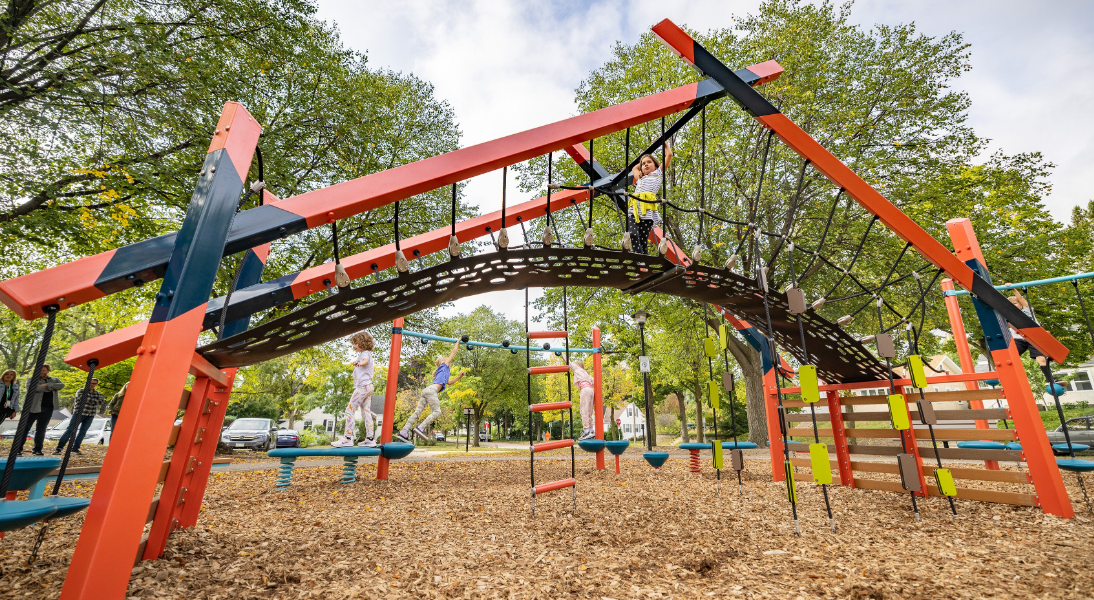Diverse Play Structures
A vital component of any effective playground landscape is the diversity of play structures. These structures should cater to different age groups and abilities to ensure inclusivity. For instance, a well-designed playground might feature separate areas for toddlers with softer, smaller equipment and areas for older children with more challenging structures. A recent study highlighted that playgrounds with diverse structures see a 30% higher usage rate than those without this variety.
Natural Elements
Incorporating natural elements into playground landscapes is not just an aesthetic choice but a functional one. Elements like trees, bushes, and flowers provide shade and a sensory-rich environment that encourages creative play. Moreover, natural features can act as informal play elements. Logs, rocks, and hills encourage imaginative play that manufactured structures may not inspire. A 2021 survey of playground designers indicated that incorporating natural elements can increase children's play time by up to 25%.
Safety Surfacing
Safety surfacing is crucial to minimize the risks of injuries from falls, which are common in playground settings. Materials such as poured-in-place rubber, rubber mulch, and engineered wood fiber are popular choices due to their shock-absorbing properties. The right surfacing under and around playground equipment can reduce the severity of injuries significantly. Data shows that playgrounds with high-quality safety surfacing reduce injury rates by up to 70%.

Shaded Areas
Shaded areas are essential for protecting children from sun exposure while they play. This can be achieved through built structures like pavilions or naturally via large trees. Shaded spaces are especially important in warmer climates, where sun exposure can be intense. Studies have shown that playgrounds with adequate shaded areas are used 50% more often during hot weather compared to those without.
Seating and Accessibility
Seating areas for parents, caregivers, and children are an often-overlooked aspect of playground design but are vital for comfort and accessibility. Benches and picnic tables also encourage family gatherings and longer stays at the playground. Additionally, ensuring that the playground landscape is accessible to everyone, including those with disabilities, is crucial. This means having pathways that are wheelchair accessible and equipment that is usable by children with various disabilities.
These elements together create a playground landscape that is safe, engaging, and inclusive. By carefully considering each component, communities can build playgrounds that serve as valuable assets for all children and their families, promoting active play and social interaction in a safe environment.
